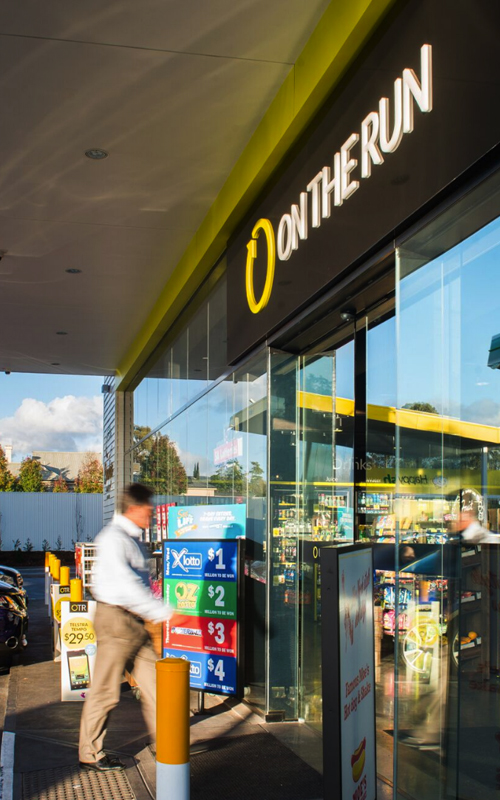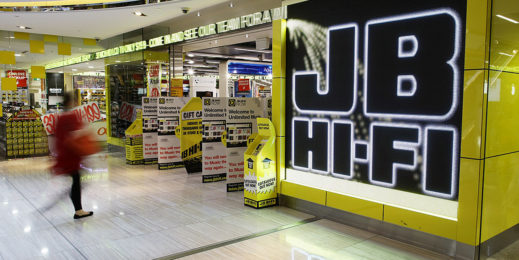
Peregrine revs up for speedier service with Azure Stack Edge and Dynamics 365
Peregrine Corporation serves customers across Australia as they stop for fuel, food, and conveniences. Providing a quick and easy experience for its guests is a top priority. To keep up with the pace of retail, the company is upgrading its infrastructure to a hybrid solution that integrates Microsoft Azure, Azure Stack Edge, Dynamics 365, and other services. The new infrastructure design provides the connectivity, consistency, and efficiency that the company needs. Over time, Peregrine expects that it will help the company avoid store downtime, maintain real-time stock levels, simplify its infrastructure management processes, and reduce maintenance and compute costs.
Modernizing at the speed of excellent service
Peregrine Corporation, a family-owned business based in South Australia, maintains a laser focus on customer service. It’s one of the largest full retailers in the region, with ventures that span fuel, convenience, quick-serve restaurants, and real estate.

One of its key businesses is a chain of retail stores named On The Run (OTR) that serves busy guests across Australia. Nick Rench, IT Manager at Peregrine Corporation, knows how critical the company’s guest touchpoints are to this business.
“We run multiple brands across our sites. OTR stores are open 24/7, and our promise is to make life easy. As a business, we strive to explore ways in which to improve the experience of our guests and the speed at which we can serve them.”
This focus on customer service has led Peregrine to reimagine the way its store systems are designed and connected. As OTR has grown, Peregrine has faced common challenges: outdated technologies, changes in customer behavior, and the pace of change with existing suppliers. The company is ready for an overhaul and an infrastructure solution that will serve its goals now and in the future.
“We are one of the few retailers who offer 24-hour service to our customers and cater to their needs accordingly,” says Malik Ahmed, Cloud Engineer at Peregrine Corporation. “The business continuously strives to improve the customer experience through technology. Currently, we are in the process of upgrading the IT equipment and infrastructure in our stores. This is where Microsoft and Azure Stack Edge come into the picture.”
Ahmed sees progress on the horizon. “Upgrading our current in-store infrastructure with cutting-edge technology will help us achieve our goals and revolutionize the retail customer experience,” he says.
Reliable connectivity from the store to the cloud and back
Given the high volume of traffic that OTR processes and the diversity of its retail store locations, Peregrine was seeking a hybrid solution with reliable, flexible connectivity.
Scalability and speed are critical for Peregrine’s retail business, and it needs an infrastructure design that optimizes for both. According to Pradeep Pindi, Store Systems Specialist at Peregrine Corporation, “We serve millions of guests each month.
To achieve speed of service, we know that we need to have something on-premises to retain our workloads in the store. And, at the same time, we need to have that cloud connectivity to the back office.
Rench adds, “We wanted the type of capabilities that we have in Azure—and have that on-premises—with a consistent experience and speed and performance at the store level.”
Peregrine also needs an infrastructure that consistently serves each store’s unique needs. Ahmed explains why this is important.
“We have stores in rural areas where they don’t have high internet speed connections. We wanted to have something that is both in-store and in the cloud that would synchronize when it comes to failovers and redundancy, so that we can have the best of both worlds.”
Finding the right solution with Azure Stack Edge
After evaluating its options, Peregrine chose a solution that incorporates Azure Stack Edge, which provides the connectivity and consistency that Peregrine needs through a centrally managed platform.
Ahmed describes how the new design impacts the stores’ day-to-day connectivity, explaining, “What we are planning to do is a direct connection to Dynamics 365, and the failover needs to happen in Azure Stack Edge. We expect to have a minimum of 99 percent of uptime.”
One of the team’s other top considerations was how easy the infrastructure would be to manage, and they factored in what Peregrine was already using across its retail business.
By using Azure Stack Edge to bridge the gap between its on-premises transactions and its cloud workloads, Peregrine addressed these needs within their budget. “We have already heavily invested in Microsoft products. We use Dynamics 365, Microsoft 365, Power BI, and multiple other products,” explains Ahmed. “We wanted to have a single pane of glass where we could administer and monitor all of the systems.
We want to get the best performance and reduce the downtime in our stores, while fulfilling our business requirements, and we wanted it all for a competitive price. We evaluated a few other vendors, and Azure Stack Edge came out on top
Creating big possibilities from small spaces
In physical locations with small footprints, it can be difficult to find enough room in the floorplan for on-premises hardware that supports high network traffic and leaves room for innovation. Peregrine got ahead of this challenge.

“One of our main requirements was to have multiple virtual machines without compromising on space. The back office space is quite limited, and we wanted something that is portable and small that could serve a bigger purpose,” explains Ahmed. “With Azure Stack Edge, we can deploy multiple virtual machines and multiple databases on the hardware and use an IoT integration in the same device, and it will all be connected into Azure.”
Ahmed explains how this orchestration ensures connectivity and consistency. “We deployed three virtual machines. One is used to monitor the in-store cameras, and the other is used to store a Dynamics 365 database backup. If the store loses its internet connection to Dynamics 365, it would be able to operate normally while that particular VM continues with the operations. Then, once the connection is restored, it will be able to synchronize back to Dynamics 365.”
Connectivity between individual store locations and the head office will always rely on the strength of the company’s internet connections. However, OTR can optimize for connectivity by localizing network-intensive operations on each store’s Azure Stack Edge system.
Pindi highlights how the new infrastructure design will impact the customer experience at the store level. “At OTR, we offer a comprehensive omnichannel experience to guests walking into our stores. We enable our guests to pay at the pump without having to come into the store by using the OTR app. We also enable our guests to click and collect their food, coffee, or supermarket needs. To enable that, we need real-time connectivity to our head office systems—that is key for us. With Azure Stack Edge and an in-store database, we are hoping to get that real-time connectivity.”
The benefits of flexible connectivity
Peregrine’s rollout is in early stages, but the company is looking forward to the benefits of its integrated hybrid infrastructure.
The new infrastructure helps OTR’s retail stores deliver on their promise of speedy service by helping the IT team get ahead of maintenance issues before they interrupt the flow of business.
“Today, with our outdated systems and also our legacy point-of-sale systems, teams at each store log three tickets each week on average,” says Pindi. “That’s a reaction to an incident that happens in the store. If we can provide our store teams with more proactive maintenance and maintain that uptime, that is a huge win for us. We give that time back to our store team members, who can then work on serving our guests.”

Peregrine has integrated Dynamics 365 into its solution to connect its point-of-sale transactions to its finance systems in real time, so that stock movements are reflected immediately.
“What that enables our supply chain teams to do is to maintain those stock levels. We promise our guests to never close and never run out. With Dynamics 365, we are hoping to deliver exactly on that promise,” says Pindi.
Because the infrastructure unifies OTR’s systems, Peregrine will save further on maintenance by bringing work in-house. Pindi says, “With a combination of Azure Stack Edge and Dynamics 365, we are enabled to manage our stores’ infrastructure with a central management console. We are intending to virtually remove the maintenance overhead.”
Peregrine will see savings on compute costs as well. “Each one of our stores has multiple registers,” says Pindi. “The biggest store that we’ve got has about 12 POS registers. Consolidating that compute into one single in-store server is key for us. And we save the investment into compute in that space while it can be centrally managed.”
As Peregrine continues to roll out its new infrastructure, it’s piloting a solution to recognize vehicles’ number plates based on real-time CCTV feeds. One benefit of this is loss prevention, in situations where a number plate is tied to a known offender in a published database.
Watch the customer story video here. Find out more about Peregrine Corporation on LinkedIn and peregrine.com.au








